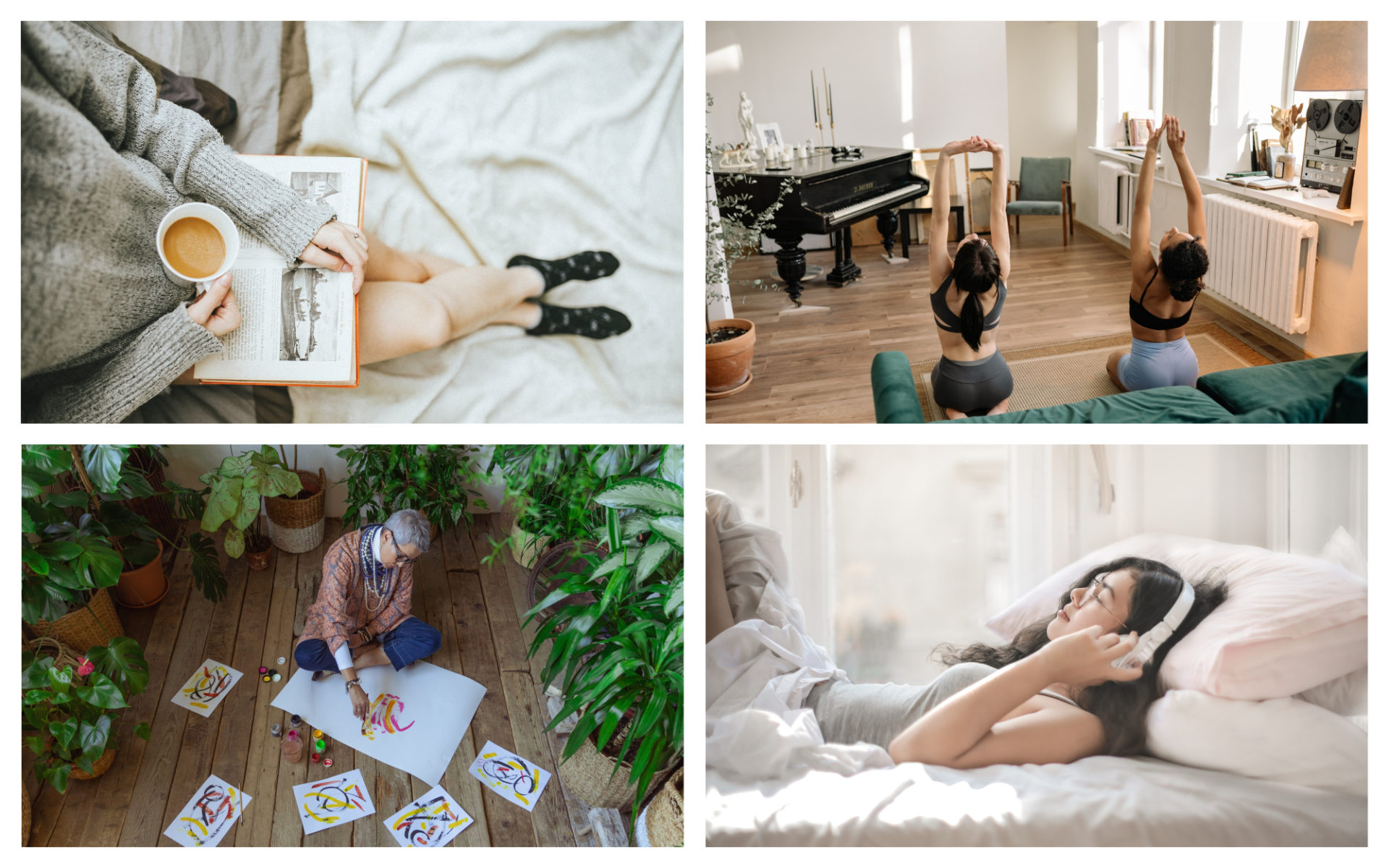Why Screen Time Disrupts Sleep

Checking our phones before bedtime is something that many of us are guilty of. It’s easy to go down the rabbit hole of late-night scrolls when we’re bored or having trouble getting to sleep. As enticing as it may be to watch just one more funny video on YouTube, it is not in your best interest. You’ve most likely been told this numerous times but spending time on your devices just before bed is not a great habit. From the negative effects of blue light on sleep quality to the confusing impact on circadian rhythms, nighttime electronic device usage can be quite harmful. Read on to learn about the impact of screens on sleep, and healthier, practical ways to manage this relationship.
The Relationship Between Screens and Sleep
Blue Light
Our digital devices emit blue light; a colour in the visible light spectrum that the human eye can see. Exposure to light in the evening throws off the body’s biological clock. Blue light, in particular, impacts the body’s ability to prepare itself for sleep, as it blocks melatonin. Melatonin is the sleep hormone that our brains naturally produce in response to darkness. Its production contributes to better sleep and helps regulate our circadian rhythms. When melatonin is suppressed by blue light, our sleep patterns can become disrupted as a result. At night, blue light may trick the brain into thinking that it’s daytime, making us alert when we should be feeling drowsy. Some serious health problems have also been linked to melatonin suppression. Research suggests that these problems can include cancer, heart disease and obesity.
Night Light / Night Shift
To protect users from harmful blue light, device makers have introduced blue light filters to some of their gadgets. Features like Night Light and Night Shift are readily available for the health-conscious late-night scroller. These features use your device’s clock and geolocation to determine when the sun will set in your area. After sunset, Night Shift will filter out blue light by changing the colour temperature of your screen. The goal here is to make it easier for users to fall asleep as their exposure to blue light will be minimized.
While this setting has given night owls some peace of mind, new research continues to expose some of its shortcomings. There is some belief that Apple’s Night Shift Mode does not block out all blue light. These features are considered ineffective by critics because they supposedly only reduce blue light rather than completely filtering it out. This may have something to do with a problem that screens have called backlight bleeding. Backlight bleeding occurs when light from a monitor escapes from the edges of the screen. It is believed that this excess light produced is not picked up by blue light filter apps or features.
How to Manage Your Screen Time
The research around blue light is complex and ever evolving. One thing remains clear, however; putting the devices away altogether can help with better sleep. We know. It’s hard to do this. We live in a time where we have almost everything we need to entertain ourselves with at our fingertips. Regardless, getting consistent, quality sleep should always come before staying up late to binge-watch the latest series or read up on the day’s trending tweets.
Here are a few practical ways to manage your screen time to avoid sleep disruption:
Avoid Screens Before Bedtime Here at Zenbev, we recommend avoiding all screens at least 1 or 2 hours before bedtime. We do, however, recognize that for some, this is no small feat. For this reason, we recommend starting small with 30 minutes of no screen time and working your way up. If it’s too tempting to keep your device on your nightstand, you can store it away in a drawer or leave it in another room.
Take Zenbev Zenbev’s natural formulation is powerful and fast-acting. The strategic ingredients in this sleep aid work hard to trigger sleep and stimulate your body’s natural melatonin production process. Falling asleep faster means less time and energy for mindless scrolling.
Build a Schedule Android and Apple devices have screen time trackers that allow users to monitor their usage. Not only do these features allow you to see exactly how much time you spend on your apps, but they also allow you to set limits. With this in mind, we encourage you to make a plan – consider utilizing the Downtime feature to set restrictions on certain apps before bedtime. For example, if you’re a regular Instagram scroller, you may want to cut off access to the app during times in the day that you browse it actively. Remember, you can always lift these restrictions if you feel that you have a handle on your usage.
Replace the Device with a Hobby Ditch your device before bed and replace it with a book instead! For many, reading is a relaxing de-stressor that puts them in the mood for sleep. Even letting a soft-spoken audiobook play in the background can allow your mind to rest. If reading isn’t your thing, you can get creative and use your time towards writing, sketching or painting.
Gently Move Your Body In our previous article, we discussed the many benefits of exercise – including how it helps us sleep better. Consider doing light stretches, Tai Chi or Yoga. Nothing too intense. Before you know it, you’ll be too relaxed to want to do anything other than sleep.
Keep Yourself Busy Try doing some light clean-up around your bedroom or picking out your clothes for the following day. Not only are these activities productive, but they can distract you from reaching for the phone or tablet.
In these stressful times, it is important to be aware of anything that affects the quality and quantity of your sleep. Give it a try! We guarantee you will see results that will pay off much better than that cat video!


